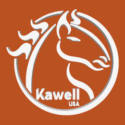Paul Goodness, chief of Farrier Services at Virginia Tech’s Equine Medical Center in Leesburg, Va., says there are many therapeutic farrier options that can be employed, as well as different types of shoes that might help if conformation of the hoof is not good.
“We may use bar shoes or pads to create a more mechanically advantageous situation,” he says. “We also have softer materials to use as shoes. There are synthetic shoes and pads available and it may take trial and error to find what works best for that particular horse. We may simply use an asymmetrical shoe with one side of the shoe wider than the other side.”
If the horse is stiff and stumbling, the shoe may need easy breakover to minimize tripping.
“This can be adjusted in many different ways,” Goodness says. “The farrier can help by changing the mechanics of how the lower leg works, making a dramatic difference.”
Todd Allen, a farrier in Vandergrift, Pa., says arthritis may affect different joints in different horses — everything from ringbone to sore hocks.
“Ringbone occurs most often in front limbs and can be very painful if it is articular (in the joint),” he says. “The best thing we can do as farriers is work with the vet and what he or she finds — whether it’s high ringbone or low ringbone — to see what we can do to make the horse more comfortable in its movement. Breakover can be moved back, making it as easy as possible for that horse.
“It’s also important on those horses to have plenty of support on the back of the hoof, so the hoof doesn’t sink into the ground quite as far. We use a pour pad on many horses, which keeps them on top of the ground. I pour all my ringbone horses. The bones descend as the foot loads, and I think there’s sometimes a little pinching as those joints descend. They press together in the load phase in the stride.”
Wedges can be helpful, as well.
“Wedging to raise the angles on a ringbone horse can sometimes be beneficial, to open up a particular joint,” Allen says. “With a ringbone horse I usually keep their angles on the high side or at least make sure they are not low in their angles. I try to keep the fronts of those joints open as much as possible.”
In the hind legs, Allen sees most problems in the hocks. There’s always the question of which comes first — front end or hind end problems.
“I think sore hocks cause a lot of other problems, he says. “Some owners ignore the hocks and then wonder why their horse starts having front end problems. I think many front end problems can be attributed to sore hocks, and vice versa.”
In some instances a person doesn’t know the horse has multiple limb problems until one gets really bad and they block it and the opposite front shows lameness.
“That horse has been sore in both front feet/legs for a long time but just happened to get worse on one of them,” Allen says. “To help a horse with sore hocks I shoe with a lot of length and a lot of lateral support. The trim is very important so the horse is unilaterally balanced in the hocks, from side to side. It all goes back to basic shoeing, but there are still a lot of farriers who short shoe them all the way around. Keep the heels back with the trim, supported and compliment it with the shoe fit, and give the foot a little length and support back there. Some people recommend a bar shoe for a hock-sore horse, but most do fine with a good, sound shoeing job with sufficient shoeing length and support.
“A lot of times these feet grow out of control. I’ve had feet that I sometimes wonder what I am doing wrong. Then I find out later that this horse has pain somewhere and is compensating for that.”







